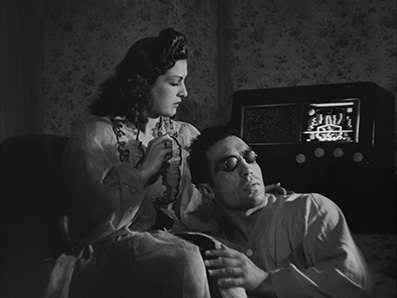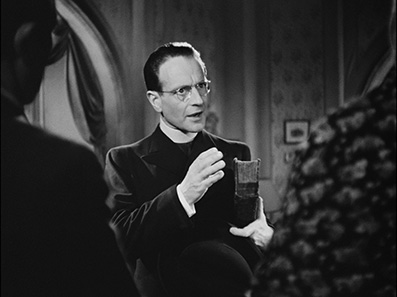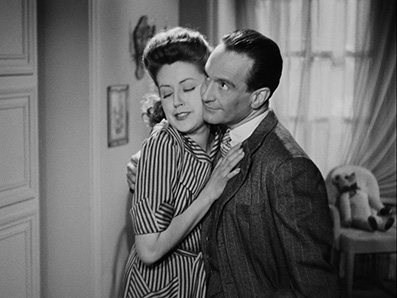|
In the realms of film and television crime fiction, there's something appallingly seductive about the word 'murder'. A death is one thing, but label it murder and you're clearly intimating that the victim was killed by a second party with malicious intent. The word and its derivatives can add gravitas to any context in which you care to employ it – place 'murderous' before 'attack' or 'rampage' and you seriously crank up the seriousness of either, hence its popularity with tabloid headline writers in search of a circulation boost. I distinctly remember that the prospect of taking part in a ball game at school with next to no rules was nowhere near as alarming as being told that the activity in question was commonly known as Murderball. It's no wonder the word crops up so often in film titles, removing any ambiguity about the subject matter for genre fans and promising a dark edge to even the more lightweight contenders. Kindly Jessica Fletcher may be as polite and cheerful as your favourite aunt and be old friends with what seems like half the people on the planet, but when the series in which she appears is called Murder, She Wrote, you can pretty much guarantee that somebody will end up dead wherever she goes.

Sometimes the very absence of the word from a title is more intriguing than its inclusion. Having quickly established himself as a director who could milk a good murder for all the suspense it was worth, Alfred Hitchcock must have delighted in titles that revealed precious little about the plot but were made highly suggestive by his preferred subject matter, titles like The 39 Steps, Rope, Shadow of a Doubt and Suspicion (the key exception – Dial M For Murder – was the title of the celebrated play from which it was adapted). But early in his career Hitch's fondness for this most dramatic of plot catalysts gave birth to a film whose title threw such ambiguity to the wind. As an enthusiastic young film student working my way back through the filmmaker's largely unseen silent and early sound work, imagine my glee at discovering a film whose title was simply Murder!, complete with exclamation mark.
It's with similarly lip-licking anticipation that I greeted the title, The Murderer Lives at 21 [L'assassin habite... au 21], all the more so when I discovered that it was the solo directorial debut of one Henri-Georges Clouzot, the genius behind the back-to-back masterpieces The Wages of Fear [Le salaire de la peur] and Les Diaboliques, two of the most genuinely frightening films I've ever seen. As a title it's as intriguing as those of any of the aforementioned Hitchcock features, but for different reasons. It does, after all, sound more like a line from the final act than a title – not only does it openly announce that a murderer is at large but it provides us with his address. Well part of it, anyway. The key question is whether this is information reserved only for the audience or if the characters in the film aware of it too. Aha...
The film certainly gets off to a stylish start, as the camera drifts around a small bar to settle on a cheerfully intoxicated scruff who has just won the lottery and is celebrating by stumbling from one bar to another and drinking himself silly, as we all might do in his place. Maybe that's just me. Somewhat foolishly, perhaps, he is making no secret of his financial good fortune and is waving the cash around, which is attracting the attention of his fellow patrons and the concern of the staff. They advise him to watch his step on his journey home as there's a murderer at large, a threat he dismisses as press fabrication. From the moment he leaves the bar, however, he is stalked by the camera in smartly executed POV, which follows him down the road, calmly observes his nervous but abortive attempt to hail a cab, and corners him against a wall. Hands appear in shot to unsheathe a sword-stick and stab him to death, then rob him of his lottery win and gingerly place a calling card bearing the name Monsieur Durand on his corpse.

This, it quickly becomes clear, is far from the first incident involving the mysterious and deadly Monsieur Durand, and it won't be the last. In a sequence of dizzyingly efficient plot development, two police commissioners come and go and a third is warned that a similar fate awaits him if he fails to nail the killer within a week. Not to worry, as hot on the case is smoothly self-confident Inspect "Wens" Vorobechik (Pierre Fresnay), who is convinced that he can track down the killer. Similarly sure of her ability to root the murderer out is Wens' scarily hyperactive girlfriend Mila (Suzy Delair), who pushily pesters people with her strident personality, shrill machine-gun chatter, boisterous opera singing and terrifying hats. Unsurprisingly, perhaps, it's Wens who discovers Durand's location first when a chance encounter with a habitual criminal – one who amuses himself by loudly insulting policemen when drunk – reveals that our man is lodged at a boarding house at No. 21 Avenue Junot.
With the killer's identity still a mystery, Wens takes a room at the house under the guise of a pastor in order to quietly investigate his fellow boarders, and the film takes on the air of murder-mystery chamber piece, one constructed from a lively series of conversations and encounters and set entirely within the boarding house walls. While not as visually or structurally adventurous as the preceding scenes, it does boast a smoother narrative flow and as a character piece is peppered with small pleasures. Principal amongst these are Wens' fellow boarders, whose collective quirkiness at times gives the residents of the apartment block in Delicatessen a run for their money. There's perennially humourless former serviceman Doctor Théodore Linz (Noël Roquevert), ageing spinster and wannabe novel writer Mademoiselle Cuq (Maximilienne), blind ex-boxer Kid Robert (Jean Despeaux) and his very attentive young nurse, a cheerfully eccentric illusionist known as Professor Lalah-Poor (Jean Tissier), and upbeat salesman Monsieur Colin, who's cashing in on the murder spree by making faceless mechanical dolls of Monsieur Durand that stab, strangle and point guns. Even house manservant Armand (Marc Natol) is a bit of an oddball, a bird call impersonator who loudly practises his craft as he attends to his duties. As if this were not daffy enough, Mila also takes a room at the house to launch her own investigation, convinced the fame that will come from unmasking the killer will help her faltering show-business career.

That the film was made by a young French director during the German occupation of his country (for a German-run studio, no less) can't help but send you searching for smuggled signs of dissent, but if they are there then they're well hidden, save for a final gag in which our hero strikes a match on the neck of a villain after positioning his arm in what could be construed as a Nazi salute. It matters not. For its energy and pace alone, The Murderer Lives at 21 holds its own against the American screwball comedies to which it is distantly related and was doubtless influenced by. It's littered with neat directorial touches (one character is manipulated smoothly into shadow so he can remove his trousers without horrifying the censor and in the blink of an edit is banged up for evidence we can only presume this strip-search revealed), and while it's hard to give a hoot about the true identity Monsieur Durand, the investigation itself is a good deal of fun and climactic revelation a lot smarter and more satisfying than you might expect, despite that trait later adopted by a string of Bond villains for delaying a murder to proudly explain to the hero just how it was all done.
The Murderer Lives at 21 moves at a sometimes express-train lick, hopping from scene to scene without a pause for breath and with dialogue delivered as if the actors are being paid at a word-per-minute rate. And despite a suspicion that some of the humour is lost in translation, there are still moments to savour in the character detail and offbeat exchanges. Even the maddening Mila has her share of priceless moments, theatrically practising a press conference speech to an audience that includes a bust, a hat, a doll and a teddy bear, and attempting to cheer up the despondent Wens by enthusiastically squeezing his blackheads.
Presented in its original aspect ratio of 1.37:1, the transfer here is the result of a new restoration by Gaumont in France, and for a film first released back in 1942 the results are rather good, though a few notches shy of the best vintage Masters of Cinema releases. The sharpness seems to vary a little and is never standard-setting, but there are a number of shots where the picture detail does pop – the close-up of Wens licking and sealing the envelope that he then passes to Mila and the early close-ups of Lala-Poor are good examples. Contrast is similarly variable, being a touch aggressive in places (Wens and the envelope again) and softer in darker scenes to avoid losing picture detail. As we've come to expect of recent digital restorations, there is no frame jitter and an impressive lack of damage and dust spots. Film grain is almost invisible – whether this is the result of a digital clean-up is hard to say.

The Linear PCM 48 2.0 mono soundtrack is a product of its time in its restricted dynamic range, but all of the dialogue is clear, good news for you fluent French speakers able to pick up on the lingual subtleties suggested by Ginette Vincendeau below. There are no obvious signs of damage and there's surprisingly little background hiss.
Ginette Vincendeau on The Murder Lives at Number 21 (13:18)
The only on-disc extra is an interview with Ginette Vincendeau, professor of French Cinema at King's College London, who provides a useful appreciation of the film, including how Clouzot came to direct it and how his reputation suffered in the years immediately following the war when he was branded a collaborator for making films for a German run studio. She also teasingly reveals that the dialogue is peppered with “untranslatable” sexual innuendos that were daring for the time.
Booklet
Always one of our favourite components of any Masters of Cinema release, the booklet here is well up to their usual standards and includes an essay on the film by Judith Mayne, another on French cinema under German occupation by Christopher Lloyd (the Professor and Head of French at Durham University, not the actor), a collection of quotes from interviews with Clouzot, credits from the film, stills, a reproduction of the French poster, and the usual advice on how to correctly view the film.
Wages of Fear it may not be, but The Murderer Lives at 21 is still remarkably confident and accomplished first feature, a briskly paced blend of murder mystery and comedy with enjoyably dark undertones, all the more impressive for being shot on a limited budget and being restricted by a shortage of film stock to about two takes per shot. The film itself and the generally pleasing transfer are the key draws here, but the interview and booklet add nicely to your appreciation of the feature they showcase. As is so often the case with MoC releases (just what would we do without them?) this just has to come enthusiastically recommended.
|